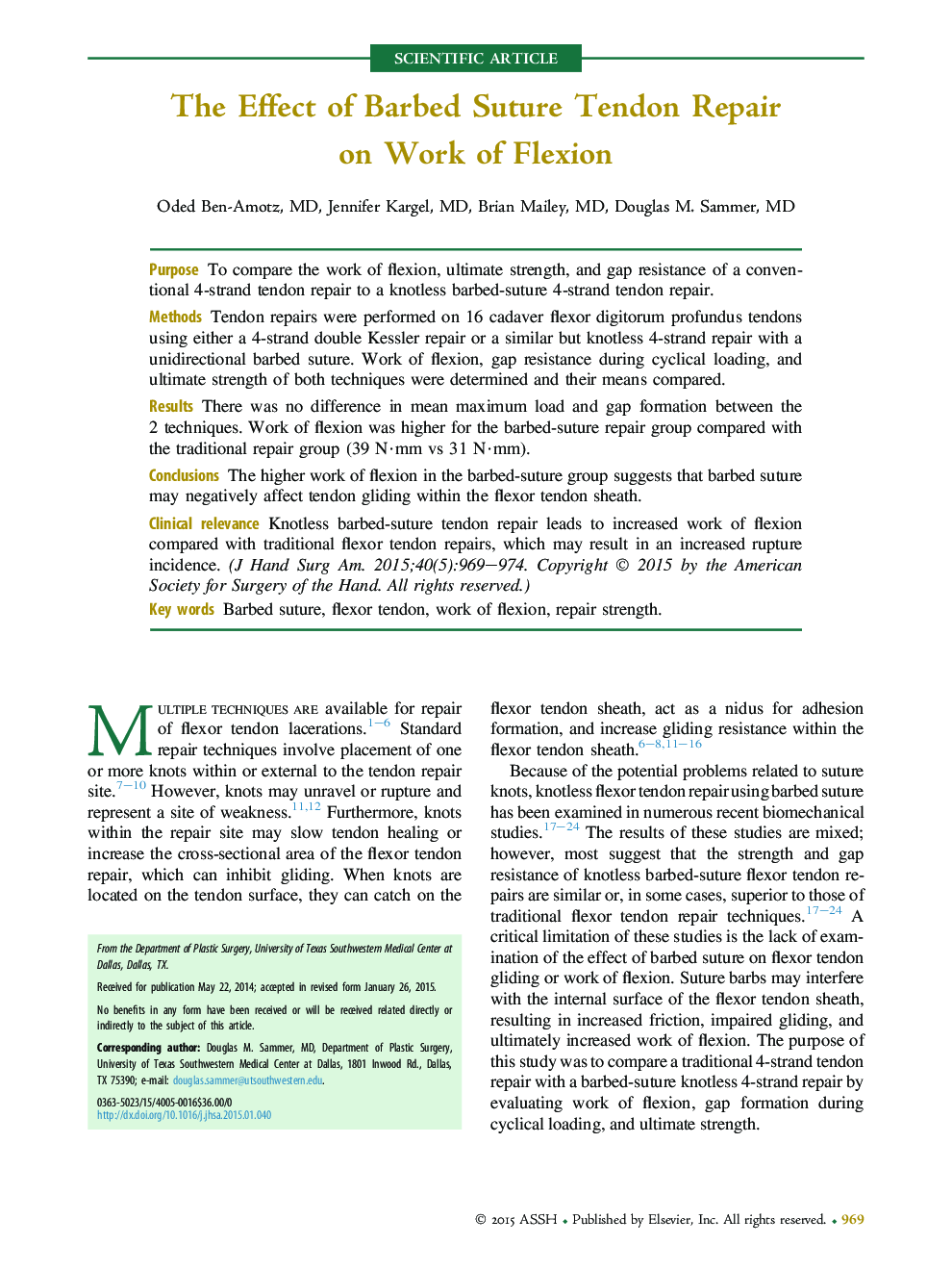| Article ID | Journal | Published Year | Pages | File Type |
|---|---|---|---|---|
| 4066813 | The Journal of Hand Surgery | 2015 | 6 Pages |
PurposeTo compare the work of flexion, ultimate strength, and gap resistance of a conventional 4-strand tendon repair to a knotless barbed-suture 4-strand tendon repair.MethodsTendon repairs were performed on 16 cadaver flexor digitorum profundus tendons using either a 4-strand double Kessler repair or a similar but knotless 4-strand repair with a unidirectional barbed suture. Work of flexion, gap resistance during cyclical loading, and ultimate strength of both techniques were determined and their means compared.ResultsThere was no difference in mean maximum load and gap formation between the 2 techniques. Work of flexion was higher for the barbed-suture repair group compared with the traditional repair group (39 N·mm vs 31 N·mm).ConclusionsThe higher work of flexion in the barbed-suture group suggests that barbed suture may negatively affect tendon gliding within the flexor tendon sheath.Clinical relevanceKnotless barbed-suture tendon repair leads to increased work of flexion compared with traditional flexor tendon repairs, which may result in an increased rupture incidence.
